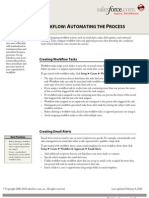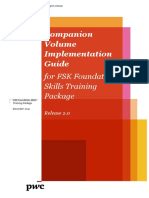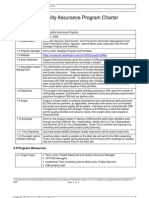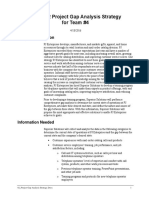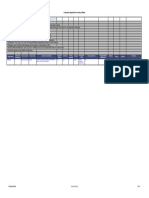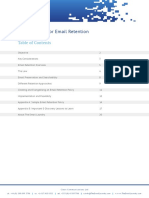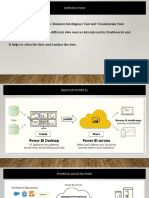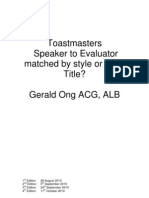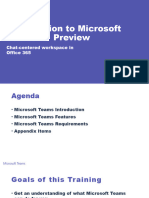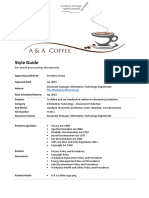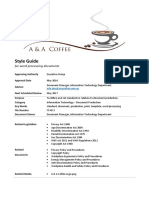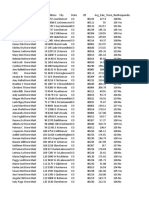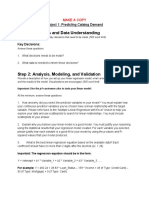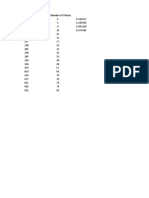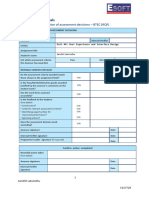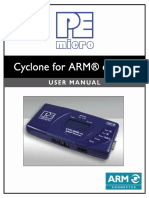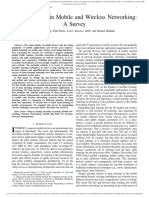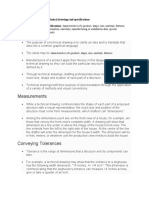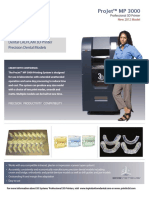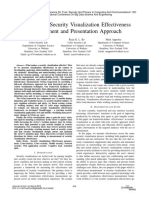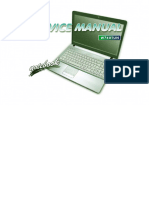100% found this document useful (1 vote)
148 views8 pagesInternal Document Style Guide
This document provides guidelines for formatting and structuring various types of documentation including policies, procedures, guidelines, standards, and processes. It addresses topics such as fonts, headings, numbering, tables, notes, and other stylistic elements. The goal is to establish consistency across documents to make them easily recognizable and enhance readability. Document control numbers are assigned based on a standardized numbering system tied to the associated policy. The release number configuration specifies how to indicate major versus minor changes between versions.
Uploaded by
subagjaCopyright
© © All Rights Reserved
We take content rights seriously. If you suspect this is your content, claim it here.
Available Formats
Download as PDF, TXT or read online on Scribd
100% found this document useful (1 vote)
148 views8 pagesInternal Document Style Guide
This document provides guidelines for formatting and structuring various types of documentation including policies, procedures, guidelines, standards, and processes. It addresses topics such as fonts, headings, numbering, tables, notes, and other stylistic elements. The goal is to establish consistency across documents to make them easily recognizable and enhance readability. Document control numbers are assigned based on a standardized numbering system tied to the associated policy. The release number configuration specifies how to indicate major versus minor changes between versions.
Uploaded by
subagjaCopyright
© © All Rights Reserved
We take content rights seriously. If you suspect this is your content, claim it here.
Available Formats
Download as PDF, TXT or read online on Scribd
/ 8




